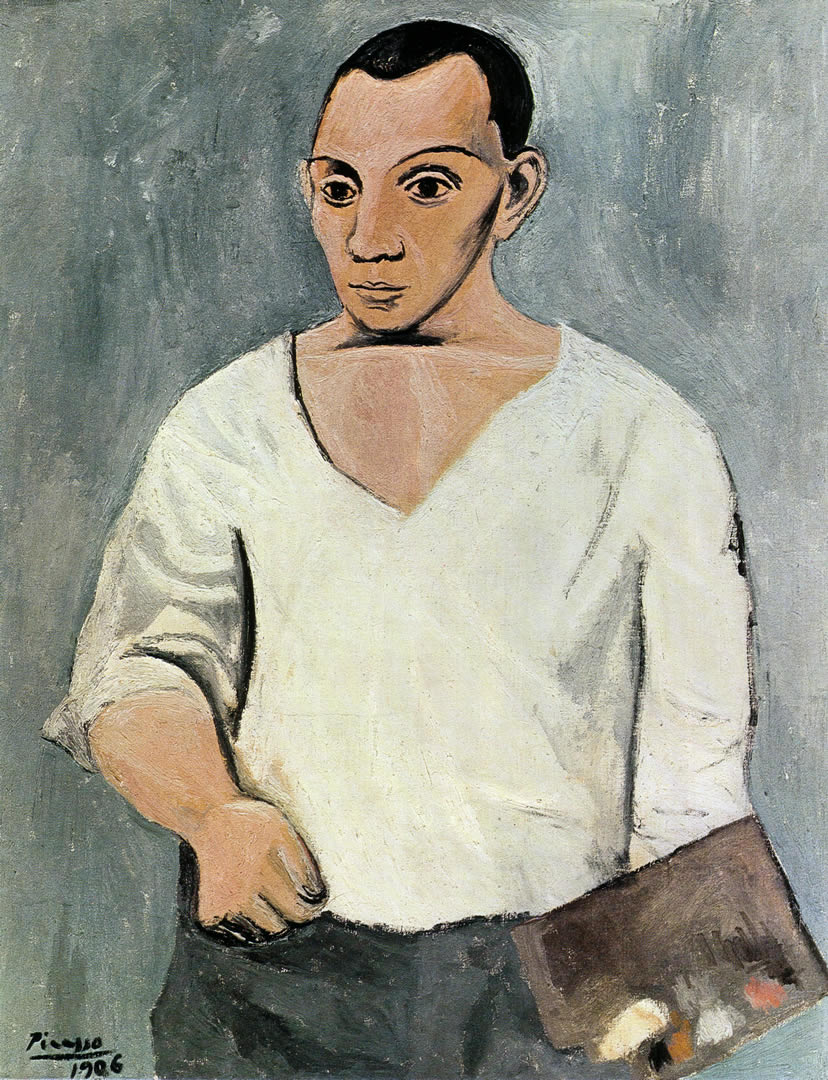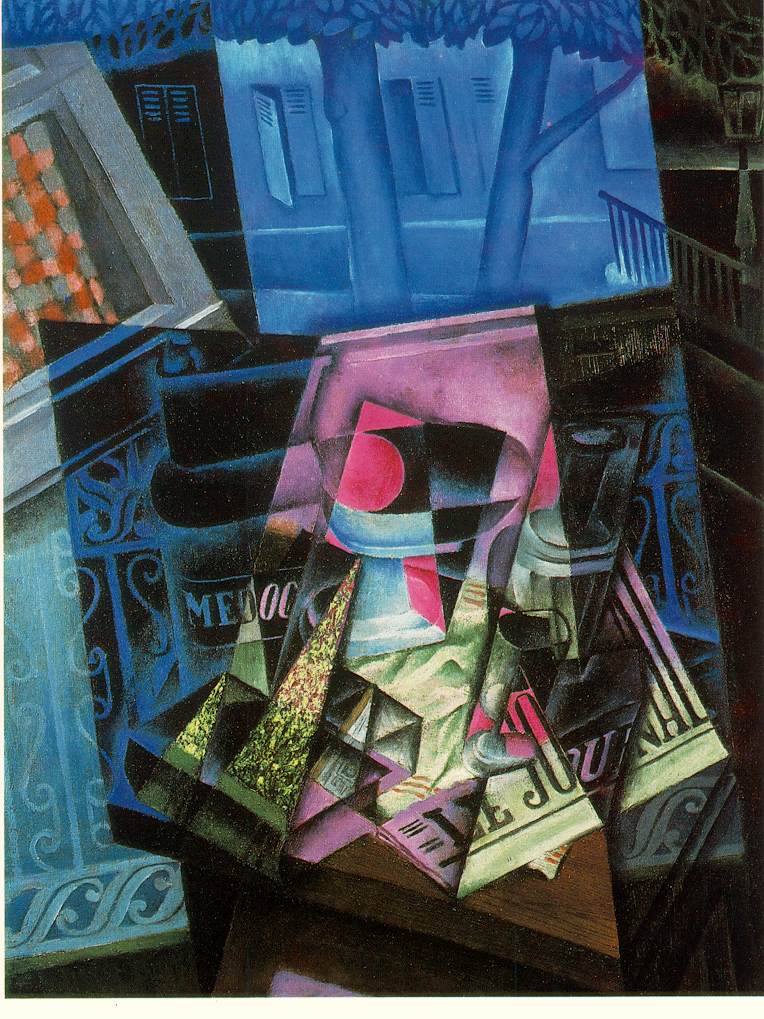Monday, December 17, 2012
Picasso and the Avant-Garde in Paris
One of the most innovative and influential artists of the 20th century, Pablo Picasso (Spanish, 1881–1973) was at his most inventive between 1905 and 1945. The Philadelphia Museum of Art presented Picasso and the Avant-Garde in Paris (February 24 - April 25, 2010) surveying Picasso’s remarkable output during these years, from the pioneering role he played in the development of Cubism to his dialogue with Surrealism and other important art movements in the 1920s and 1930s. The exhibition also explored the pivotal role that the city of Paris played in the history of modern art, where artists from around the world made the French capital a center of innovation. It included nearly 200 paintings, drawings, and sculptures by Picasso, Georges Braque, Juan Gris, Fernand Léger, Joan Miró, and many others, who collectively formed a vibrant, international avant-garde group that became known as the School of Paris.
Drawn from the Philadelphia Museum of Art’s extraordinary collection of paintings, sculptures, prints, and drawings by Picasso, and supplemented with loans from private American collections, this exhibition provided a unique opportunity to re-examine the remarkable burst of creativity that took place during one of the most revolutionary periods in the history of Western art. It includes a number of important works on paper, including collages which are rarely on display due to their inherent fragility and sensitivity to light, as well as important paintings that have not been on view in recent decades.
Among the major works in the exhibition were Picasso’s bold
Self-Portrait with Palette (1906)
and Three Musicians, (1921), a grand summation of the artist’s almost decade-long exploration of Synthetic Cubism,
Léger’s monumental Cubist masterpiece The City (1919),
Jean Metzinger’s Tea Time (Woman with a Teaspoon) (1911), known in its day as “The Mona Lisa of Cubism,”
Juan Gris’s Still Life Before an Open Window, Place Ravignan,
which reveals the artist at the height of his powers, expertly balancing lyricism and geometric rigor in a composition of evocative spatial juxtapositions and luxurious color,
and Marc Chagall’s lyrical and kaleidoscopic Half Past Three (The Poet) (1911).
In the spring of 1904, when the twenty-three year-old Picasso made the decision to move permanently to Paris, he had already established a reputation in his native Spain as a painter of exceptional ability. He plunged into the city’s bohemian community, soon establishing what would become lifelong friendships with a number of fellow artists and writers, including the French painter Georges Braque who would become his close collaborator in the development of Cubism. The exhibition will be chronologically arranged in order to show the rapid evolution of Picasso’s art during his time in Paris, starting with his early Self-Portrait with Palette (1906) in which the young painter unabashedly proclaims his artistic mastery. The next gallery will highlight the lively interchange between Picasso and Braque between 1910 and 1913, when they developed a shared vocabulary of grid-like scaffolding, overlapping planes, and a reduced palette of beige, ocher, white, and gray that marked the beginning of Cubism, as seen in
Braque’s Still Life (Violin)
and Picasso’s Man with a Guitar, both of 1912.
“Cubism represented a seismic shift in the way visual artists depicted the world around them,” said Michael Taylor, the Muriel and Philip Berman Curator of Modern Art at the Philadelphia Museum of Art, who organized the exhibition. “Forms were flattened, dissected and recomposed into various essential shapes and lines that were shown from multiple angles and viewpoints. No longer was pictorial fidelity to the natural world considered paramount to a painting’s success, as artists were now free to engage in a profound imaginative reordering of reality.”
Although Picasso and Braque invented the new pictorial language of Cubism, with its flattened forms and multiple perspectives, artists such as Juan Gris and Fernand Léger soon made significant contributions of their own, especially to the development of what has come to be known as ‘Synthetic’ Cubism. One of the highlights of the exhibition will be a partial re-creation of the 1912 Salon d’Automne, where paintings by Gris, Albert Gleizes, and Metzinger were densely hung and interspersed with sculptures by Amedeo Modigliani, Jacques Lipchitz, and Raymond Duchamp-Villon.
A section of the exhibition titled “Americans in Paris” dealt with the numerous expatriates—among them the painters Max Weber, Charles Demuth, and Arthur Beecher Carles—who made their home in Paris and sought inspiration in the atmosphere of artistic and intellectual ferment that flourished in the years between the two World Wars. The installation also includes a selection of photographic portraits of the poets, writers, musicians, and performers who were a part of this eclectic circle, including Gertrude Stein, F. Scott Fitzgerald, and Josephine Baker.
The exhibition further chronicled Cubism’s persistence and adaptations during the war years, and Picasso’s return to figuration in his neo-classical works of the early 1920s, a direction echoed more broadly in the work of many artists at this time that moved toward more traditional subject matter and techniques. Picasso’s experiments in Cubism were also an essential precursor to the development of Surrealism and the work of artists such as Joan Miró and Salvador Dalí who came to prominence in the 1920s.
Picasso maintained a complex relationship with this hugely influential movement, developing his own independent variant of Surrealism in paintings such as
Bullfight (1934)
and Head of a Woman (1937-38). The exhibition also considers the role of Eastern European artists who joined the thriving modern art scene in Paris, among them Alexander Archipenko, Marc Chagall, and Constantin Brancusi.
The onset of civil war in his native Spain, and the approach of the World War II, laid the groundwork for the increasingly dark and political content of Picasso’s later works. He remained in Paris for the duration of these conflicts and continued to be productive, despite the scarcity of art supplies.
The works he created in the late 1930s and early 1940s are often somber in mood, as seen in the austere
Chair with Gladiolas (1943)
and in the melancholy still lives which feature human skulls in a macabre pun on the French term for still life, nature morte.
His magnificent sculpture Man with a Lamb (1943-44) references the themes of sacrifice and redemption that were also explored by
Jacques Lipchitz in works like The Prayer of 1943.
Through the dramatic shifts in style and technique that marked these tumultuous years, Picasso continued to be a galvanizing force and an inspiration to the artists around him. The exhibition demonstrates the tremendous variety and consistently high quality of his work during this period, and brings to life the extraordinary atmosphere of early 20th century Paris and the lasting significance of the art created at this time.
The exhibition was accompanied by an online catalogue that includes all the works from the Museum’s permanent collection, and is available at: www.philamuseum.org.












